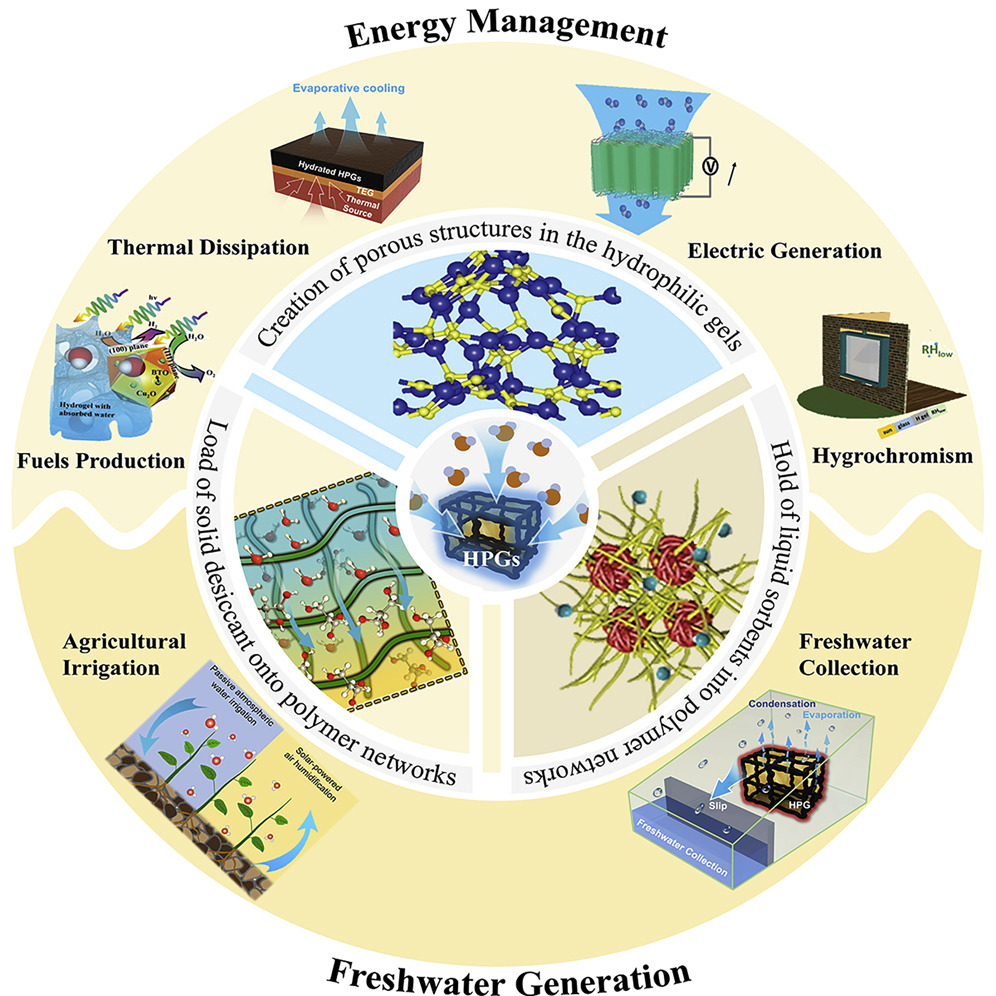The global population explosion has triggered a huge demand for freshwater and energy. Despite the great progress in technology development, achieving freshwater and energy sustainability still remains challenging.
The atmosphere contains abundant atmospheric moisture reaching up to 12,900 cubic kilometers, six times the total volume of global rivers. The atmospheric moisture can satisfy all demands for energy and freshwater if exploited effectively, however, it is often ignored.
Recently, the emerging atmospheric moisture exploitation (AME) technology is a promising alternative to alleviate the global freshwater and energy crisis. Benefiting from their high-tuneable physical and chemical properties, unique porous and swellable features, and easy integrability with functional additives, hygroscopic polymeric gels (HPGs) characterized by three-dimensional (3D) polymeric networks have been regarded as desirable materials for AME.
Based on the previous reported studies on HPGs, Prof. CHEN Tao and coworkers at the Ningbo Institute of Materials Technology and Engineering (NIMTE) of the Chinese Academy of Sciences (CAS), systematically summarized recent progress in HPGs with particular focus on the hygroscopic mechanism, design and preparation strategy, and relevant AME applications.
In the review published in Matter, researchers at NIMTE unravelled the hygroscopic mechanism of HPGs, which involves two simultaneous processes, i.e., moisture trapping and water storage.
Besides, versatile synthesis strategies for HPGs were discussed, including the construction of porous structures in hydrophilic gels, mixing hygroscopic components within polymer networks, etc.
In addition, rational integrations of functional additives into their networks through gelation chemistry can endow HPGs varied properties to exploit captured moisture for diverse cutting-edge applications for energy management and freshwater generation, involving fuel production, thermal management, electric generation, hygrochromism, freshwater collection, and agricultural irrigation.
Moreover, the current development challenges and future trends of HPGs were illustrated, concerning relatively low hygroscopic performance and structural stability, incomplete regeneration after hydration, as well as fabrication cost, commercial viability and conceptual production technologies.
The work was supported by the Natural Science Foundation of China (No. 52073295), Ningbo Science and Technology Bureau (No. 2021Z127), Key Research Program of Frontier Sciences, Chinese Academy of Sciences (QYZDB-SSW-SLH036), and K. C. Wong Education Foundation (GJTD-2019-13).

Fig. The synthesis strategies and AME applications of HPGs (Image by NIMTE)
Contact
NI Feng
Ningbo Institute of Materials Technology and Engineering
E-mail: nifeng@nimte.ac.cn

